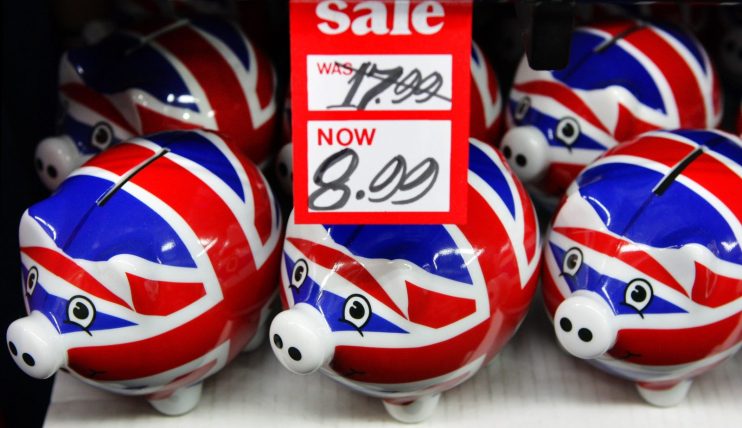British savings jump during lockdown as UK GDP slips

British households increased their savings sharply at the beginning of the year as the third coronavirus lockdown closed pubs, restaurants and shops.
The UK’s savings ratio, which measures the income households saved as a proportion of disposable income, rose to 19.9 per cent from 16.1 per cent in the fourth quarter of 2020.
This was the second highest savings ratio on record after a leap to 25.9 per cent between April and June last year during the first lockdown, according to the Office for National Statistics.
While the figures reflect the challenge faced by retail and hospitality venues earlier this year, they suggest Brits could have more spending power as restrictions continue to ease.
The data also showed the UK economy shrank slightly more than previously thought in the first three months of the year as GDP contracted by 1.6 per cent.
The ONS had previously estimated a 1.5 per cent decline, while household spending was weaker than first estimated.
However, the hit to GDP was a significant improvement on the 20 per cent slump during the first lockdown last year as businesses adapted to ongoing restrictions.
“Today’s GDP release cemented the fact that growth contracted in the first quarter, but this is fading fast in the rear-view mirror as recent monthly data points to a much rosier picture for the UK economy,” said Jonathan Sparks, chief investment officer UK and Channel Islands at HSBC private banking.
“With the re-opening economy in mind, we expect there will be a greater willingness to take on more risk, driving investor sentiment towards the equity markets where there is a clear yield and growth advantage over fixed income.”
Separate figures from the ONS showed the UK’s current account deficit narrowed to £12.8bn in the first quarter as the tightening of coronavirus rules hit the economy and hurt demand for imports.
The balance of payments shortfall was equivalent to 2.4 per cent of GDP compared with 4.8 per cent in the fourth quarter of 2020.